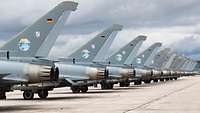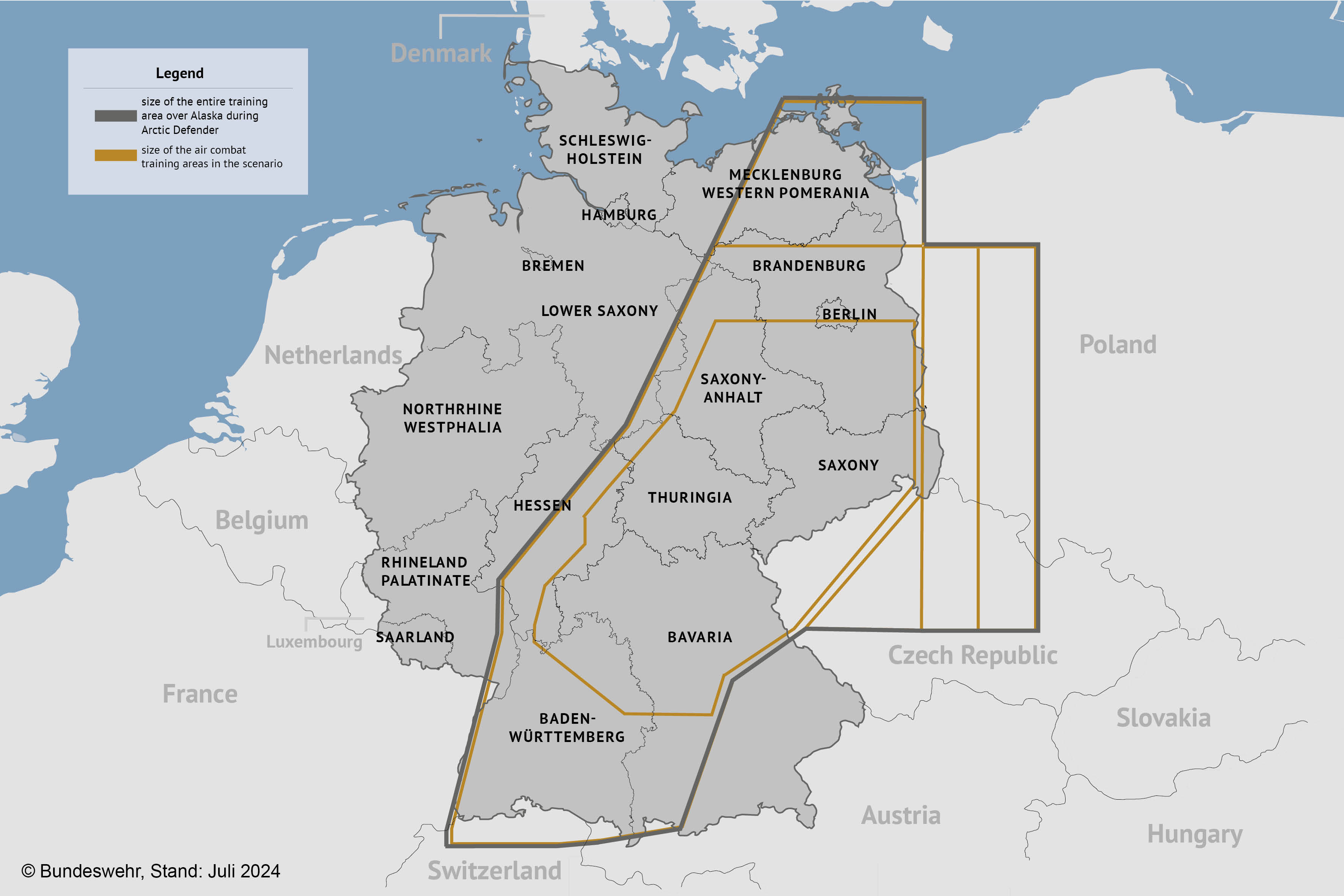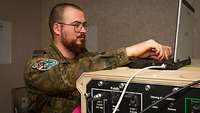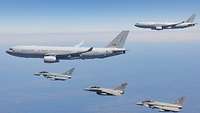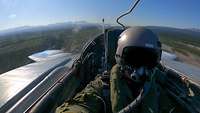Arctic Defender – training cannot be more realistic
Arctic Defender – training cannot be more realistic
- Date:
- Place:
- Alaska
- Reading time:
- 3 MIN
One deployment: Pacific Skies 24, five individual exercises. Arctic Defender 2024 kicks off the series in Alaska. The high-value exercise began on 8 July. With 90 systems and 86 aircraft involved, Germany, France, Spain, Canada and the USA practice together in eight missions for an emergency.
NATONorth Atlantic Treaty Organization’s Article 5 states that if a member state is under attack, all other members states must provide support. Due to the Alliance contingency, as it is called, joint exercises with the allies are fundamental in order to act in an efficient and secure manner. This is the only way to make deterrence credible. Safe and effective combined actions are the end product of multinational cooperation. The objective is to shape the individual core competencies of the nations to create synergies.
How is training performed?
The airspace available is crucial. The exercise airspace, in which combat aircraft, helicopters, tankers, and tactical transport aircraft are practicing, is not only larger than in Germany, but also less crowded by civil air traffic. Both the expansion of the area and the multifaceted topography offer numerous options to render training as realistic as nowhere else.
The exercise involves fourth-generation, but also numerous fifth-generation aircraft. During Arctic Defender, the aircrews must prevail against real air defense systems. On the ground, the exercise supervisor is provided with a data link to these systems, which allows the movements of the jets to be detected and countermeasures to be initiated. The aircrews must tactically respond to these measures. By means of real-time analysis of flight parameters, it is possible to determine whether the simulated engagement was effective.
Friendly coalition forces (also called “blue”) train against replicated enemy forces (“red”). The teams must fight against one another while observing any potential hazards, such as ground-based air defense. Anyone who has been hit, must leave the formation for a short period of time. This way of training, which is also referred to as kill-life removal, puts the plan to achieve the mission objective to the test in a realistic manner. Besides observing tactical procedures, extreme attention must be paid when up to 70 aircraft are flying at the same time. In all missions, flight safety must not be impaired.
During each sortie, the participants from all over the world follow one main mission embedded in a pre-defined scenario. In addition, more subgoals may be provided in order to achieve the mission objective. Each individual exercise mission requires approximately 12 hours of planning the day before so that eventually 90 minutes of training can be performed. Mission success will be analyzed and evaluated in a debriefing so that valuable lessons for future missions can be learned. In addition to the daily large-scale exercise, there is also the opportunity to perform individual air combat training missions together.
The missions
Each mission follows a goal that is predefined in the scenarios of the exercise supervisor in due consideration of intended learning objectives. This includes, for example, the engagement of enemy air defense or landing operations involving special forces to rescue hostages. Different learning objectives may also be combined. For this purpose, helicopters and transporters are escorted, enemy military infrastructure is engaged by using service ammunition, artillery is integrated into the air war, or coordinated withdrawal from the joint operations area is practiced. In the process, it is important to employ the different capabilities of the individual nations and weapon systems using appropriate tactical options. In order to prepare the aircrews for the case of emergency, weapons will also be employed in the scenario during Arctic Defender. This means that the aircrews practice the delivery of precision bombs and the use of the internal gun.
During every high-value mission, various weapon systems are kept in reserve to ensure smooth operations and to avoid failures. The same is true for the mission commander as the person responsible for each mission. In this regard, the different nations may take turns in designating their own commanders so that everyone has the opportunity to gain experience in commanding such multinational operations. This is because these are the experience values gained during training, which are intended to ensure survival on operations. Training cannot be closer to reality.


